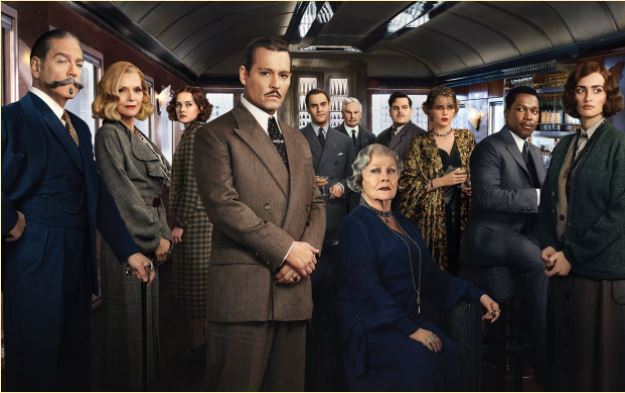‘Orient Express’ offers fans a good ride
If you are familiar with Agatha Christie, you know Belgian detective Hercule Poirot. Charming and clever, he is a hero to be admired in many of Christie’s mystery novels. Recently Hollywood has made a second film adaptation of Christie’s Murder on the Orient Express, a remake of the 1974 version, featuring an all-star cast including Lauren Bacall, Ingrid Bergman, Sean Connery, and more. Kenneth Branagh directs and stars in this new take on a classic story, which also showcases the talents of Michelle Pfeiffer, Penélope Cruz, Johnny Depp, and many more.
As the movie opens in Jerusalem, we get a taste of the genius of the character Poirot, who is portrayed as very intelligent and yet very particular, and nearly obsessive (especially when it comes to breakfast). He is then introduced as the esteemed detective that he is as he quickly uncovers the thief of a religious relic, all thanks to the “little grey cells.” As another mystery is solved, Poirot is set on the idea of a vacation.
Though Poirot’s vacation is interrupted by an urgent call to London, he runs into an old friend, the director of the train the Orient Express, who offers him a relaxing and luxurious trip back to Europe in lieu of the vacation he was made to abandon. Anyone can guess that things did not go as planned.
Boarding the train, Poirot is introduced to the other occupants of the lavish Orient Express. “I know there is something about a train full of strangers, pressed together for days with nothing in common but the need to go from one place to another, and never see each other again,” he says. He meets a governess, a doctor, a gangster by the name of Ratchett, among others. Poirot, as well known as he is, is confronted by Ratchett. Ratchett asks for “protection,” as he is an art dealer who is known to sell forgeries, and has a lot of enemies. Poirot promptly says no.
That very night, Poirot is awoken, and when he exits his room to investigate, he sees a woman running away in a red dressing gown. In the morning it is discovered that Ratchett had been murdered, and the conflict is further exacerbated by the fact that the train became stuck on the side of a mountain due to an avalanche.
Of course, everyone turns to the acclaimed sleuth Poirot to solve the case, and it seems that everyone is a suspect. Connected to a tragic backstory, it is clear Ratchett was killed for more than his art dealings. The answer to the mystery surprised the audience, as well as Poirot himself.
Not only was the cinematography, set, and costumes absolutely stunning and wonderfully colorful, I thought the acting was very well done. Though Branagh hasn’t earned high marks in the field of directing for this film, he portrayed Poirot perfectly, in my opinion. Despite the fact that he sort of broke the traditional image of Poirot, who is often shown to have a darker complexion, he was quite suitable for the part. Instead of the cool and quiet versions of the character played by Albert Finney and David Suchet, Branagh offers a more youthful take on Hercule Poirot, though with the same elegance as his predecessors.
Unfortunately, the supporting cast is bloated and unnecessary, with lots of A-list stars thrown in largely for marketing purposes. However, there were some admirable performances from the group, especially Daisy Ridley and Josh Gad. Still, it felt at times awkward to try to fit in and get to know so many different personalities. Poirot interviews each of them as suspects in the murder, and that’s the only time many of the characters speak. The elusive Count and Countess are barely seen, and characters like Princess Dragomiroff and Biniamino Marquez hardly utter a meaningful sentence.
Overall, I’d say as a mystery fan, the movie was well done. Though the Los Angeles Times described it as “creaky but durable” and “overstuffed” and “underachieved,” it does praise the film for “a few distinct, modernizing touches, notably a few pulpy action beats, a more ethnically diverse cast and a heightened awareness of racial and religious tensions that feels more 2017 than 1934.” I like it for not only these reasons, but also for its faithfulness to story, its classic murder mystery feel, and its haunting presentation of the idea that things are not always the way they seem.

